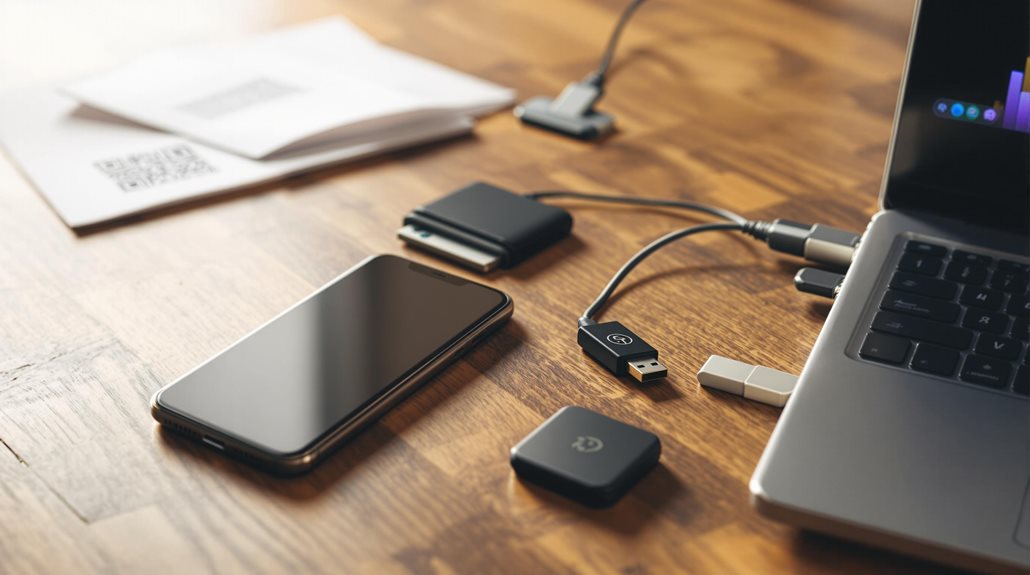Cryptocurrency wallets come in two main types: hot wallets and cold wallets. Hot wallets are connected to the internet and include software apps on phones or computers, making them convenient for frequent trading. Cold wallets stay offline, offering better security for long-term storage of digital assets. Hardware wallets like Ledger and Trezor are popular cold wallet options that look like USB sticks. Understanding the differences between these wallet types helps users make informed storage choices.

Cryptocurrency wallets come in several different forms that serve unique purposes. The two main categories are hot wallets and cold wallets, each offering different benefits for crypto users. Hot wallets stay connected to the internet, making them convenient for people who need to make frequent transactions or trade often. These include mobile apps, desktop programs, and web-based wallets that users can access easily from their devices. Private key information is essential for wallet access and must be protected at all times. Users can protect their wallets by implementing two-factor authentication for enhanced security.
Cold wallets, on the other hand, stay completely offline, providing the highest level of security for cryptocurrency storage. They're particularly useful for people who want to keep their digital assets safe for long periods. Since cold wallets aren't connected to the internet, they can't be hacked through online attacks, making them ideal for storing large amounts of cryptocurrency.
Hardware wallets are a type of cold wallet that looks similar to a USB stick. These physical devices store private keys on a secure chip inside the device, keeping them safe from online threats. Popular hardware wallets like Ledger, Trezor, and SafePal can hold multiple types of cryptocurrencies. The only way someone could steal from a hardware wallet is by having the actual device in their hands. Users must carefully store their recovery phrase to prevent permanent loss of access to their funds. It's important to note that hardware wallets don't actually store the digital assets themselves, but rather the keys needed to access them on the blockchain.
Software wallets represent the most common type of hot wallet. These applications can be installed on computers or smartphones, and they're easy to use for everyday transactions. Well-known examples include Exodus, Trust Wallet, and MetaMask. While software wallets offer convenience and quick access to funds, they're more vulnerable to security risks like malware and online attacks.
The choice between different wallet types often depends on how people plan to use their cryptocurrency. Hot wallets work well for small amounts that users need to access regularly, similar to carrying cash in a regular wallet. These wallets make it simple to buy, sell, or trade crypto without any delays. However, they're not the best choice for storing large amounts of digital assets due to their connection to the internet.
Cold storage options like hardware wallets provide much better security for larger holdings. They keep private keys safely tucked away from online threats, making them nearly impossible to hack. Users only need to connect these devices to a computer when they want to make a transaction, keeping their crypto secure the rest of the time. This extra layer of protection makes cold wallets particularly valuable for long-term cryptocurrency storage.
Frequently Asked Questions
What Happens to My Crypto if I Forget My Wallet Password?
When someone forgets their crypto wallet password, they can't access their digital money.
It's like being locked out of a safe with no spare key. The funds stay in the wallet but can't be moved, spent, or traded.
While there are some recovery options using backup phrases or recovery services, without proper backup information, the cryptocurrency might be permanently lost.
Many investors have lost millions due to forgotten passwords.
Can Someone Track My Cryptocurrency Transactions Through My Wallet?
Yes, crypto transactions can be tracked.
Public blockchain explorers let anyone view transaction histories, wallet addresses, and fund movements. While the owner's real name isn't directly visible, blockchain analysis tools can link wallets to identities through various methods.
Some privacy tools like mixers and privacy coins exist to make tracking harder, but most mainstream cryptocurrencies operate on public blockchains where all transactions are visible.
Which Crypto Wallets Are Best for Beginners?
For beginners, Coinbase Wallet and Trust Wallet stand out as popular choices.
They're known for their easy-to-use interfaces and simple setup process. Exodus is another option that's gained attention for its straightforward design.
These hot wallets let users store, send, and receive crypto without complex steps.
For those wanting extra security, the Ledger Nano X is a beginner-friendly cold wallet that's simple to set up and use.
How Much Does It Cost to Set up a Crypto Wallet?
Setting up a basic crypto wallet can cost anywhere from $15,000 to $30,000 for development.
More complex wallets with advanced features might cost between $75,000 and $200,000.
The final price depends on several factors, including the developer's rates ($50-$180 per hour), location, and project duration.
There are also ongoing costs for maintenance, security updates, and bug fixes that need to be considered after the initial setup.
Can I Store Different Types of Cryptocurrencies in One Wallet?
Yes, many crypto wallets today can store different types of cryptocurrencies in one place.
These are called multi-currency wallets. They're like a digital pocket that holds various coins and tokens.
Popular software wallets like Coinbase Wallet and Exodus can hold hundreds of different cryptocurrencies.
Hardware wallets, such as Ledger and Trezor, also support multiple cryptocurrencies.
It's similar to having different types of money in one physical wallet.





